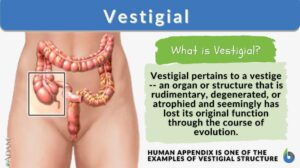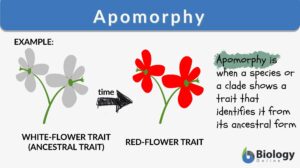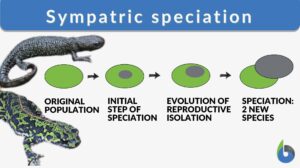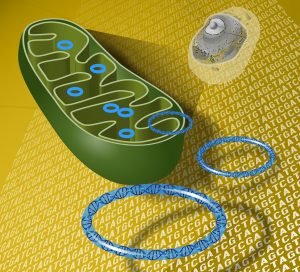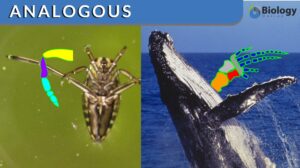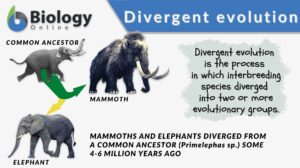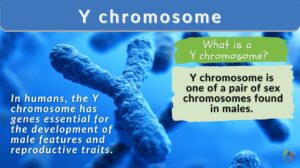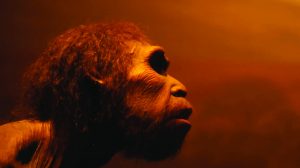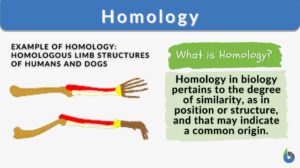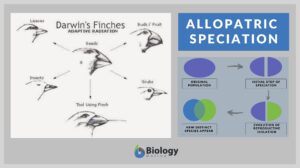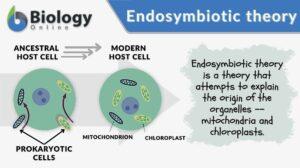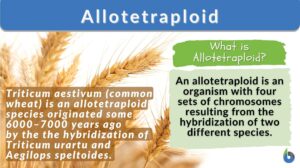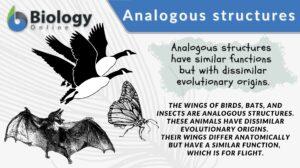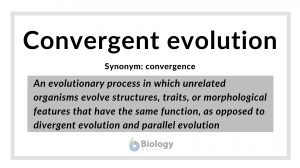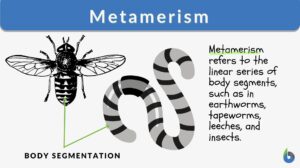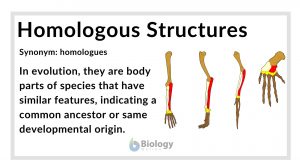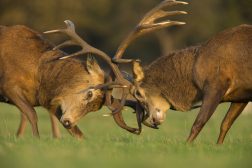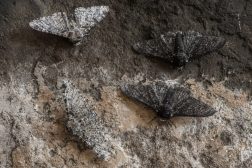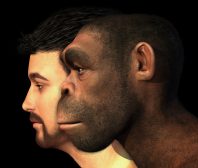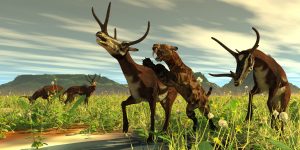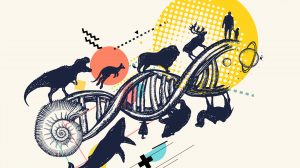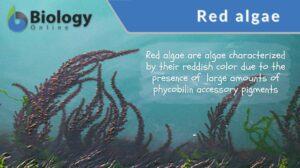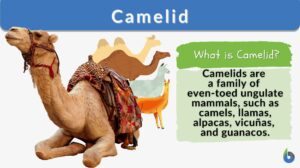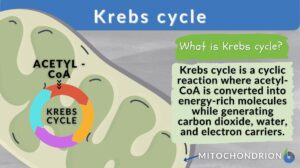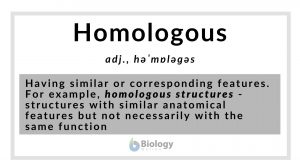Search Results for: ancestral
Sympatric speciation
Speciation is a process of evolution through which two different existing populations evolve and a distinct species form. It... Read More
Prokaryotic Ancestor of Mitochondria: on the hunt
The alphaproteobacteria have been widely cited as the closest relative-- and possibly the prokaryotic ancestor -- of the... Read More
Divergent evolution
Divergent Evolution Definition Divergent evolution refers to the process by which interbreeding species diverged into two... Read More
Y chromosome
Y chromosome Definition The Y chromosome constitutes one member of the pair of sex chromosomes within an organism, a common... Read More
The Hominids
Although humans in today's world are the most advanced species on the planet, we previously shared the exact same genetic... Read More
Monophyletic
Definition adjective Of, pertaining to, about, or describing that which descended from a single ancestral... Read More
Adaptive radiation
Definition noun The diversification of several new species from a recent ancestral source, each adapted to utilize or... Read More
Monogenism
Definition noun (anthropology) A theory postulating that the species came from only one ancestral line or origin, thus... Read More
Allopatric speciation
We can define speciation as a process by which the novel genetically independent group of organisms are formed through the... Read More
Endosymbiotic theory
A eukaryotic cell is distinct from a prokaryotic cell by the presence of membrane-bound cellular structures called... Read More
Allotetraploid
Allotetraploid Definition An allotetraploid is an organism with four sets of chromosomes (4n). This is in contrast to the... Read More
Analogous structures
Analogous Structures Definition In evolutionary biology, analogous structures are biological structures having similar or... Read More
Convergent evolution
Convergent evolution definition What is convergent evolution? Convergent evolution is a concept in evolutionary biology... Read More
Metamerism
Metamerism Definition Metamerism is the repetition of homologous body segments. This type of development can be seen in the... Read More
Homologous structures
Homologous Structures Definition What are homologous structures? In biology, homologous structures are physical features... Read More
Paraphyletic
Definition adjective A biological taxonomy that pertains to a certain group of organisms does include some but not all of... Read More
Polyphyletic
Definition adjective Taxonomic groups that have similar character states that descends from one or more ancestral... Read More
The Gene Pool and Population Genetics
Reviewed by: Mary Anne Clark, Ph.D. The previous tutorial is about adaptive radiation. Adaptive radiation is... Read More
Examples of Natural Selection
Reviewed by: Mary Anne Clark, Ph.D. Darwin's Finches Darwin's finches are an excellent example of the way in... Read More
The Homo Species
Over the long term, it looked like Homo would supersede any ‘similar model’ of animals due to their unique tool using... Read More
Early Mammals on Earth
By the time the dinosaurs were extinct 65 million years ago, the world's landmass had split up into more or less the... Read More
Alphaproteobacteria
Definition noun A taxonomic class belonging to the phylum Proteobacteria that includes phototropic proteobacteria,... Read More
Archamoebae
Definition noun A taxonomic class in Phylum Amoebozoa characterized by the absence of mitochondria Supplement Archamoeba... Read More
Genetics and Evolution
Tutorials in Genetics and Evolution immerse on the molecular aspects and the works of nature that led to what every living... Read More
Chloroplast DNA
Definition noun plural: chloroplast DNAs DNA in the chloroplast that carries the code for proteins and RNAs essential to... Read More
Phylogenetic tree
Definition noun, plural: phylogenetic tree A tree diagram that shows the evolutionary histories and relationships of groups... Read More
Chromosome 2
Definition noun In humans, the autosome that is considered as the second-largest, spanning more than 242 million base pairs,... Read More
A Look Into Natural Selection and its Mechanisms
Charles Darwin is credited with outlining the fundamentals of evolution. He was a smart and eager pupil and protégé, and... Read More
Peripatric speciation
Definition noun A speciation in which new species evolve in a sub-population that colonized a new habitat or niche within... Read More
Krebs cycle
Krebs cycle, also known as the citric acid cycle or tricarboxylic acid (TCA) cycle, is a fundamental metabolic pathway that... Read More
Homologous
Homologous Definition What is homologous? In general science, the word “homologous” is used to show a degree of... Read More
Degenerate
Degenerate means to become worse or less of its kind or former state. In biology, it means an entity performs the same... Read More
